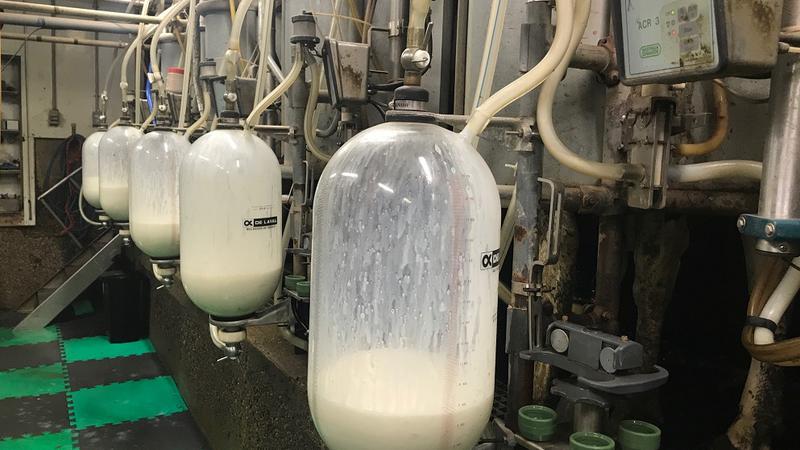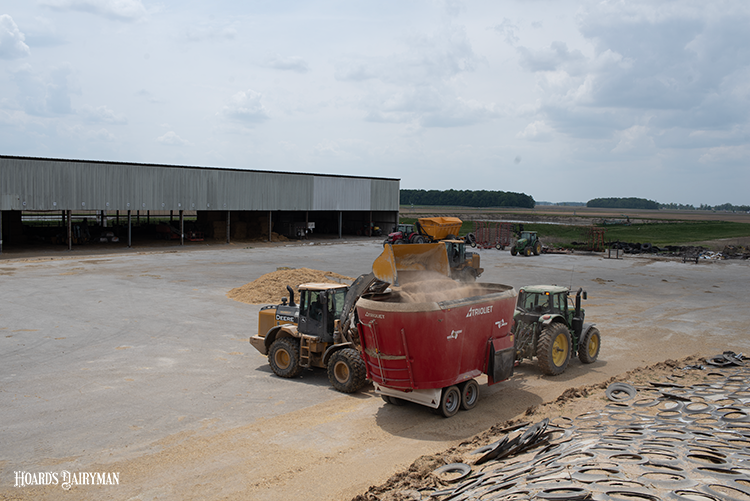HIGH-FRUCTOSE corn syrup (HFCS) has been in the news again. This time, though, it is mixed with a bit of politics. Dairy producers should be paying attention. Why the connection? There is a concept in dairy and beef production that should be at the forefront of every discussion regarding the role of cattle in feeding a hungry world. No, this first concept isn’t bragging about the amazing things that happen in a rumen, though it is related. It is also not the fun notion and meme-worthy statement that a beef steer can turn grass into a rib eye followed by the question, “What is your superpower?” Once again, related, but not exactly the concept I have in mind. So, what is it?
A world to feed
Without detailing world population statistics and predictions, it is easy to say there are a lot of mouths to feed with more on the way. Also, some of these mouths are already short on adequate food. Putting aside politics, corruption, regional conflicts, or something as heavy as famine or even genocide, we can all agree that the moral responsibility for a farmer is significant. The world needs food, and we know how to make it. The concept that I think best positions the beef and dairy cow within this system is that farms produce food, humans get the first shot at gaining the necessary human-valuable nutrients from that food, and the cows use the magic of the rumen to not only turn the grass into a rib eye, but also upgrade all of the nonhuman-valuable nutrients into dairy and beef products. A short version would be “let the people eat first and the cows eat second.”
Dual purpose
So, how does this relate to the recent political football of HFCS? The corn crop grown for HFCS is a good example of this concept. The controversy of HFCS’s impact on the human body compared to regular sugar (sucrose) makes it perhaps not the best example, but it is the one in the news. The process of creating a sweetener for humans and then allowing cows to benefit from the results is still a good one. No matter if it is corn starch converted to fructose, barley starch fermented to beer, or even corn starch converted into ethanol, it’s usually the energy-dense simple carbohydrate that extracts the most value followed by the cows utilizing the fiber.
News outlets recently reported that Coca-Cola had committed to changing all of their products from HFCS to cane sugar. It was initiated by the somewhat controversial view that the high consumption of HFCS compared to regular cane or beet sugar exacerbates health risks like obesity and Type 2 diabetes. In the days following this news flash, it was announced that a new product containing cane sugar would be launched in the fall as opposed to the previous news of a total switch. During the days of this discussion, the corn and sugar world noticed and reacted. I reached out to a friend in the animal feed sector who focuses on molasses and asked if everything went from HFCS to regular sugar, would there even be enough to cover the increased usage? The answer was a strong no. Now, a few months later, the dust has settled, and things are back to normal. But what if this happened in the future, how would it impact how we feed dairy cows?
By-products vary
It is the wet corn milling process that creates HFCS. Guess what it also creates? Corn gluten feed (CGF). This medium protein by-product is an important one in the dairy industry. It is commonly fed in dairy diets across the U.S. and much of the world. When compared to the fermentative process that creates another important by-product, distillers grains (DDG), the HFCS and CGF production process is less complete in the utilization of the corn starch for the intended purpose. In other words, notable levels of starch still remain in CGF compared to almost none in DDG. Another difference is that in the process to create HFCS and CGF, the fat-containing germ is removed, whereas in an ethanol plant, the fat stays with the DDG. Thus, DDG is higher in fat than CGF. This is also important when building dairy rations.
Who eats first?
It stands that in either case, politics and food choices determine what we can include in cattle diets. If HFCS continues to take hits from politics or culture, CGF might not be an available dairy ingredient in the future. Similarly, how many corn acres are destined for the ethanol plant instead of the feed mill is determined in Washington via the Renewable Fuel Standard (RFS). The broad concept of “letting the people eat (or drive) first and the cows eat second” could change over time with changing tides in politics and culture.
The good news is that our beloved dairy cow needs lots of fiber, and simple carbohydrates like starch, sugar, protein, and roughage. As often as possible, these can come after the humans have met their needs. This concept, plus a solid agronomy plan to grow forages that best match each geography, will get the cows fed and we can feed them well to meet their improving genetic potential.
So, good news! We can wait and see what by-product the world gives us and then create the best diet that we can. This entire system is related and intricately connected from planned acres, food, feed, milk contracts, and many people like you and me in the middle working out all the details.










